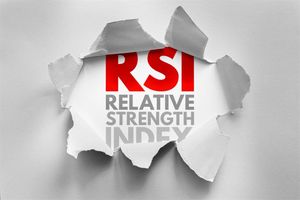Inflation, A Wreaking Havoc On The Home Budgets Of Americans
A new four-decade high of 8.6 percent inflation was reported Friday by the Labor Department.
Growth in the United States has been fuelled by cheap interest rates and government assistance to mitigate the Covid-19 pandemic’s effect. Annual inflation has grown rapidly since early 2021, when the United States economy’s comeback from the epidemic quickened, resulting to supply disruptions and other imbalances that placed upward pressure on prices for longer than policymakers expected.
The Federal Reserve must balance the need to cool the economy and rein in inflation with the goal of avoiding a recession as it implements monetary policy. There will be another meeting of Fed officials next week to discuss whether to raise rates by another half-percentage point, as they did on May 4.
Inflationary forces are regularly monitored by economists and policymakers. To slow price rises, the Fed will have to hike interest rates rapidly, which will put further pressure on them.
Inflation is wreaking havoc on the home budgets of Americans, but where exactly? To understand why certain industries’ prices have climbed so much more than others, WSJ’s Jon Hilsenrath goes back to the origins of the increasing prices. Laura Kammermann/WSJ, for use as an illustration.
According to Wells Fargo Securities’ Sarah House, “the broad picture is that inflation is quite obstinate and will continue to be very difficult to subside.” This cycle’s inflation is unlikely to have reached its apex yet, given the recent developments in the energy markets.
Prices of crude oil and natural gas soared in May as a result of Russia’s invasion of Ukraine. The average price of a gallon of normal unleaded gasoline has hit a record high of $4.97, according to AAA. Ms. House predicted that inflation would continue to climb as a result of rising energy prices.
According to her, “we’ve seen a perfect storm of those variables striking, with some large refinery closures,” given everything from the ramifications of the Russian invasion of Ukraine to Chinese lockdowns and simply the sheer thirst for travel.
Since the beginning of this year, supermarket prices have climbed at an annual rate of more than 10%, a rate not seen since the early 1980s. Paul Ashworth, the chief North American economist at Capital Economics, says that food costs have risen more widely than in the early stages of the epidemic when meat prices accounted for most of the increase.
Citrus trees and poultry are infected by illnesses, not merely the weather. According to him, the Ukraine crisis has led to a rise in the cost of baked products and cereals.
“This is not discretionary expenditure for individuals on lower incomes,” Mr. Ashworth added. It’s not enough to just substitute cheaper food types—cheaper meat cuts, for example—for more expensive options.
The tight labor market in the United States, where demand for employees far outstrips supply, is putting upward pressure on prices throughout much of the economy. Unemployment fell to its lowest level in more than 50 years last month as employers created 390,000 new jobs. While more than 6.5 million jobs were created in the last year, the percentage of Americans working has decreased since the epidemic began.
Inflationary pressures are increasing as a result of these processes. As inflation takes a toll on the purchasing power of many Americans, strong wage and job increases are helping to keep the economy from collapsing. Many businesses are raising prices as a result of rising labor expenses due to a lack of workers.
As the effects of Covid-19 fade, demand for travel and other services has increased, driving up costs for airline tickets, hotels, and restaurants.
Even if summer activities such as vacation are in great demand, increasing costs are cutting into the profits of many company owners. Group visits to Piedmont have been canceled by author Suzanne Hoffman because of the epidemic. This summer, a lot of tourists have paid their deposits back and are finally able to go on their vacations.
There is a great deal of interest, according to Ms. Hoffman, who is located in Edwards, Colo.
When it comes to the actual expenses of doing the excursions, she says, passengers on those postponed trips are now paying 2019 rates. As a result, Ms. Hoffman’s financial situation is deteriorating to the point that she may decide to discontinue organizing future trips.
“My October tour has been canceled. After this summer, “I simply don’t want to make any commitments,” she remarked.
Easing might be a major driver of inflation. After a quick rise in expenses, used vehicle prices have lost some of their lusters, with April’s prices down 4.4% from January’s, as auto manufacturing has progressively increased.
According to Oxford Economics’ Oren Klachkin, the backlog of cargo ships waiting to offload between Los Angeles and Long Beach, Calif., decreased for the fourth consecutive month in May. Target Corporation has said that it expects a decline in profits as a result of having to get rid of unsold inventory. As consumers cut down on purchases of commodities that had been popular during the epidemic, clothing stores have also been caught with a swollen inventory of casual clothes and household goods.
The post Inflation, A Wreaking Havoc On The Home Budgets Of Americans appeared first on Best Stocks.
More News
View More



Recent Quotes
View More
Quotes delayed at least 20 minutes.
By accessing this page, you agree to the Privacy Policy and Terms Of Service.